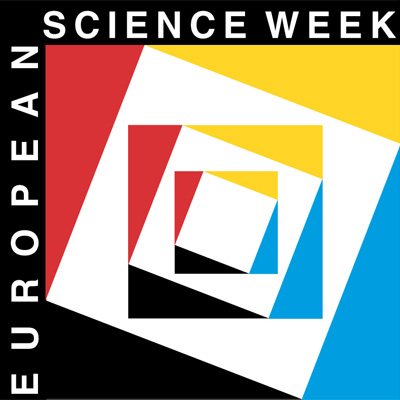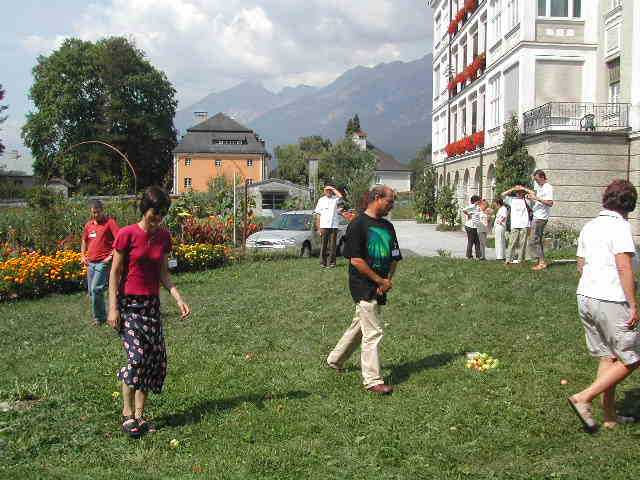

The Venus Transit 2004
... Educational Sheet 1
Appendix 3
Synodic period (the cycle of Venus)
The synodic period is the time Venus takes to be seen again from the Earth in the same position with respect to the Sun (but not necessarily to the stars). It is 584 days long (583,92 days to be exact) or just over 19 months.
When Venus is between Earth and Sun (inferior conjunction) or on the far side of the sun (superior conjunction), it is invisible in the Sun's glare. Since its greatest elongation from the Sun is never more than 45°, Venus appears only as "the morning star" and "the evening star" and its entire cycle is as follows:
Venus appears as a morning star for about 263 days
- Venus is not visible when it is behind the sun for about 50 days
- Venus appears as the evening star for about 263 days
- Venus is not visible when it is in front the sun for about eight days
Dynamic "human" model of the cycle of Venus (Synodic period)
On a large outdoor area we lay out two large concentric circles, representing the orbits of Venus and the Earth and divided into seven and twelve months respectively. The Sun is in the very centre. Two volunteers (Venus and the Earth) walk along the orbits. They move simultaneously around the Sun in an anticlockwise direction, month by month, with the same rhythm, but an adjustment to the model is necessary. We assumed the sidereal period of Venus was 7 months, but it is actually nearly 7.5 months so two revolutions last nearly 15 months. Thus, after two revolutions, Venus returns to the same point and an extra month is added to the count bringing it to 15. One extra interval has also to be added to the Earth's motion.
Bit by bit, the cycle of Venus is modelled: when we start from a conjunction, Venus is not visible at all from the Earth; after 12 steps - one Earth year - Venus has described more than one orbit. Seen from the Earth, it appears to oscillate from one side of the Sun to the other and it appears like "the morning star" or "the evening star" (or not visible at all). Each participant is invited to play the role of the Earth at least once and to view the planetary motion from within the model.
Back to the Educational sheet 1.

